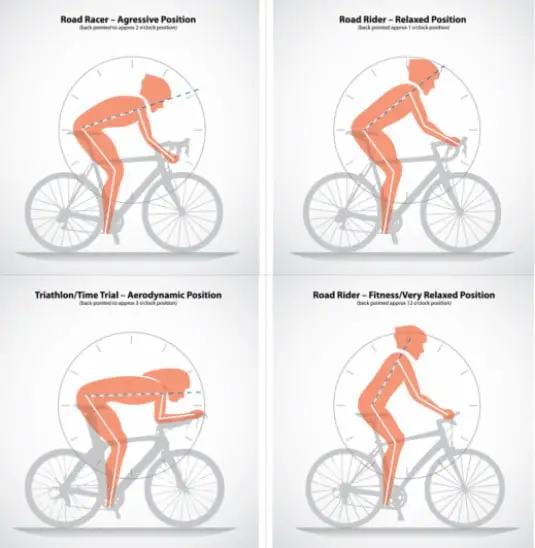
Cycling is a popular recreational activity and a means of transportation for many individuals around the world.
However, like any physical activity, it may have certain health implications. One common concern among cyclists is whether cycling can cause hemorrhoids.
In this article, we will explore this question in detail and provide insights into the relationship between cycling and hemorrhoids.
We will also discuss effective preventive measures and treatment options.
Understanding Hemorrhoids
Definition and Types of Hemorrhoids
Hemorrhoids, also known as piles, are swollen blood vessels that develop in the rectum or anus. They can occur internally, inside the rectum, or externally, under the skin around the anus.
Internal hemorrhoids are typically painless but may cause bleeding, while external hemorrhoids can be accompanied by discomfort, itching, and pain.
Causes of Hemorrhoids
Hemorrhoids can have various causes, including:
- Straining during bowel movements
- Chronic constipation or diarrhea
- Pregnancy and childbirth
- Obesity and excess weight
- Sedentary lifestyle
- Aging
- Genetics
The Connection Between Cycling and Hemorrhoids
Prolonged Pressure and Friction
One of the potential factors linking cycling to hemorrhoids is the prolonged pressure exerted on the rectal area while sitting on a bike seat.
The pressure can compress blood vessels and impede blood flow, leading to the formation or worsening of hemorrhoids.
Additionally, the friction between the bike seat and the perineal area can irritate existing hemorrhoids or contribute to their development.
Impaired Blood Flow
Cycling, especially when performed for long durations or with inadequate breaks, can result in reduced blood circulation to the pelvic region.
Restricted blood flow can increase the risk of hemorrhoids by causing blood vessels to become engorged and susceptible to inflammation.
Moreover, the constant pedaling motion may generate additional pressure on the rectal veins, further exacerbating the problem.
Does Cycling Reduce Sperm Count? The Real Truth
Impact on Bowel Movements
Engaging in cycling regularly may affect bowel movements due to the repetitive hip flexion involved in pedaling. This motion can potentially disrupt the natural peristaltic movement of the intestines, leading to constipation or irregular bowel habits.
Straining during bowel movements, a common cause of hemorrhoids, can become more prevalent among cyclists, potentially increasing their susceptibility to hemorrhoidal issues.
Preventing Hemorrhoids While Cycling
Choose the Right Bicycle
Selecting a bicycle that suits your body type and cycling needs is crucial for preventing hemorrhoids. Consider the following factors when choosing a bike:
- Seat Width and Cushioning: Opt for a bike seat that provides adequate width and cushioning to minimize pressure on the perineal area.
- Cutout Design: Look for seats with a central cutout or groove to relieve pressure on sensitive areas and improve blood flow.
- Suspension Systems: Consider bikes with front or full suspension to absorb road shocks and reduce vibrations transmitted to the perineal area.
Proper Bike Fit
Achieving proper bike fit is essential to distribute body weight evenly and reduce pressure on the rectal area. Here are a few key considerations:
- Seat Height: Adjust the seat height to ensure your legs are almost fully extended when the pedals are at the lowest position, avoiding excessive strain on the perineum.
- Handlebar Position: Modify the handlebar position to maintain an upright posture and minimize forward leaning, which can increase pressure on the rectal area.
- Bike Frame Size: Choose a bike frame size that suits your height and proportions, allowing for comfortable and balanced riding.
Maintain Good Posture

Source: bike.bikegremlin.com
Maintaining a good posture while cycling helps alleviate pressure on the perineal area and reduces the risk of hemorrhoids. Follow these guidelines for proper cycling posture:
- Sit Bones Alignment: Position your sit bones evenly on the bike seat, avoiding excessive weight on one side.
- Engage Core Muscles: Activate your core muscles to support your spine and maintain an upright posture, reducing pressure on the rectum.
- Relax Shoulders: Keep your shoulders relaxed and avoid hunching over the handlebars, as it can increase pressure on the pelvic region.
Treatment Options for Hemorrhoids
Home Remedies
For mild cases of hemorrhoids, several home remedies can help alleviate symptoms and promote healing:
- Increased Fiber Intake: Consume a diet rich in fiber to soften stools and prevent constipation. Include fruits, vegetables, whole grains, and legumes in your meals.
- Adequate Hydration: Drink plenty of water throughout the day to keep stools soft and easy to pass, reducing the strain during bowel movements.
- Sitz Baths: Soak the affected area in warm water for 10-15 minutes a few times a day to alleviate discomfort and reduce inflammation.
- Topical Treatments: Apply over-the-counter creams, ointments, or suppositories containing ingredients like witch hazel or hydrocortisone to relieve itching and inflammation.
Over-the-Counter Treatments
Over-the-counter treatments can provide relief for hemorrhoid symptoms and aid in their healing process:
- Topical Analgesics: Apply creams or ointments with pain-relieving properties to alleviate discomfort and reduce inflammation.
- Topical Steroids: Use creams or ointments containing low-dose steroids to minimize itching and inflammation.
- Medicated Wipes: Use pre-moistened wipes with soothing ingredients like witch hazel to clean the anal area gently and reduce irritation.
Medical Interventions
In severe cases or when conservative measures fail to provide relief, medical interventions may be necessary. These options include:
- Rubber Band Ligation: A procedure in which a rubber band is placed around the base of an internal hemorrhoid to cut off its blood supply, causing it to shrink and fall off.
- Sclerotherapy: Injection of a chemical solution into the hemorrhoid to shrink it by scarring the tissue.
- Infrared Coagulation: The application of infrared light to the hemorrhoidal tissue, which causes scar formation, leading to the subsequent shrinking of the hemorrhoid.
- Hemorrhoidectomy: Surgical removal of hemorrhoids, usually reserved for severe cases or when other treatments are ineffective.
Conclusion
While cycling does have the potential to cause or aggravate hemorrhoids, there are several measures you can take to prevent and manage this condition.
By selecting the right bike, ensuring proper bike fit, maintaining good posture, and implementing effective treatment options, you can continue to enjoy cycling while minimizing the risk of hemorrhoids.
If symptoms persist or worsen, consult a healthcare professional for appropriate guidance. Remember, it’s essential to prioritize your health and well-being while pursuing your cycling passion.
FAQ
What is the fastest way to heal a hemorrhoid?
The fastest way to heal a hemorrhoid depends on severity. Home remedies include increasing fiber, staying hydrated, and using topical treatments. Severe cases may require medical interventions.
Why does my bum hurt so much after cycling?
Buttock pain after cycling can be caused by pressure and friction. Improper bike fit, inadequate seat padding, and poor posture may contribute. Ensure proper fit and use a cushioned seat.
What activities cause hemorrhoids?
Activities involving prolonged sitting or straining can increase hemorrhoid risk. These include sitting for long periods, heavy lifting, chronic constipation or diarrhea, and sometimes cycling.
Does cycling tighten your bum?
Yes, cycling engages the gluteal muscles and can contribute to a toned bum. It strengthens and firms the buttocks with regular exercise.
Is cycling good for the buttocks?
Yes, cycling is beneficial for the buttocks. It engages the gluteal muscles, leading to improved strength and toning. Proper bike fit and listening to your body are important.
How to avoid hemorrhoids?
To avoid hemorrhoids, maintain a high-fiber diet, stay hydrated, exercise regularly, avoid straining during bowel movements, and practice good bathroom habits. Consult a healthcare professional for severe symptoms.
Remember, if you have persistent or severe symptoms, it’s important to consult a healthcare professional for a proper evaluation and personalized advice.






